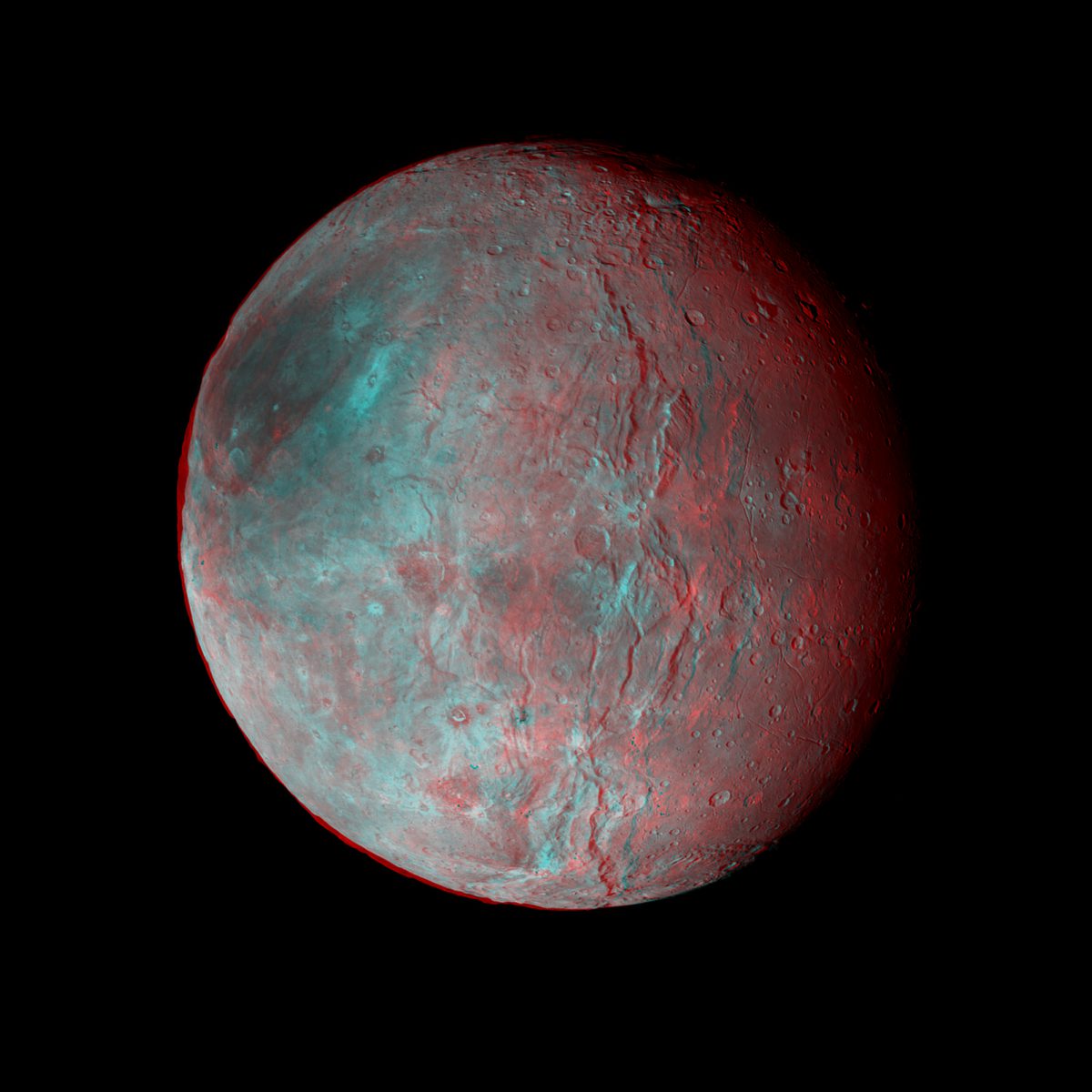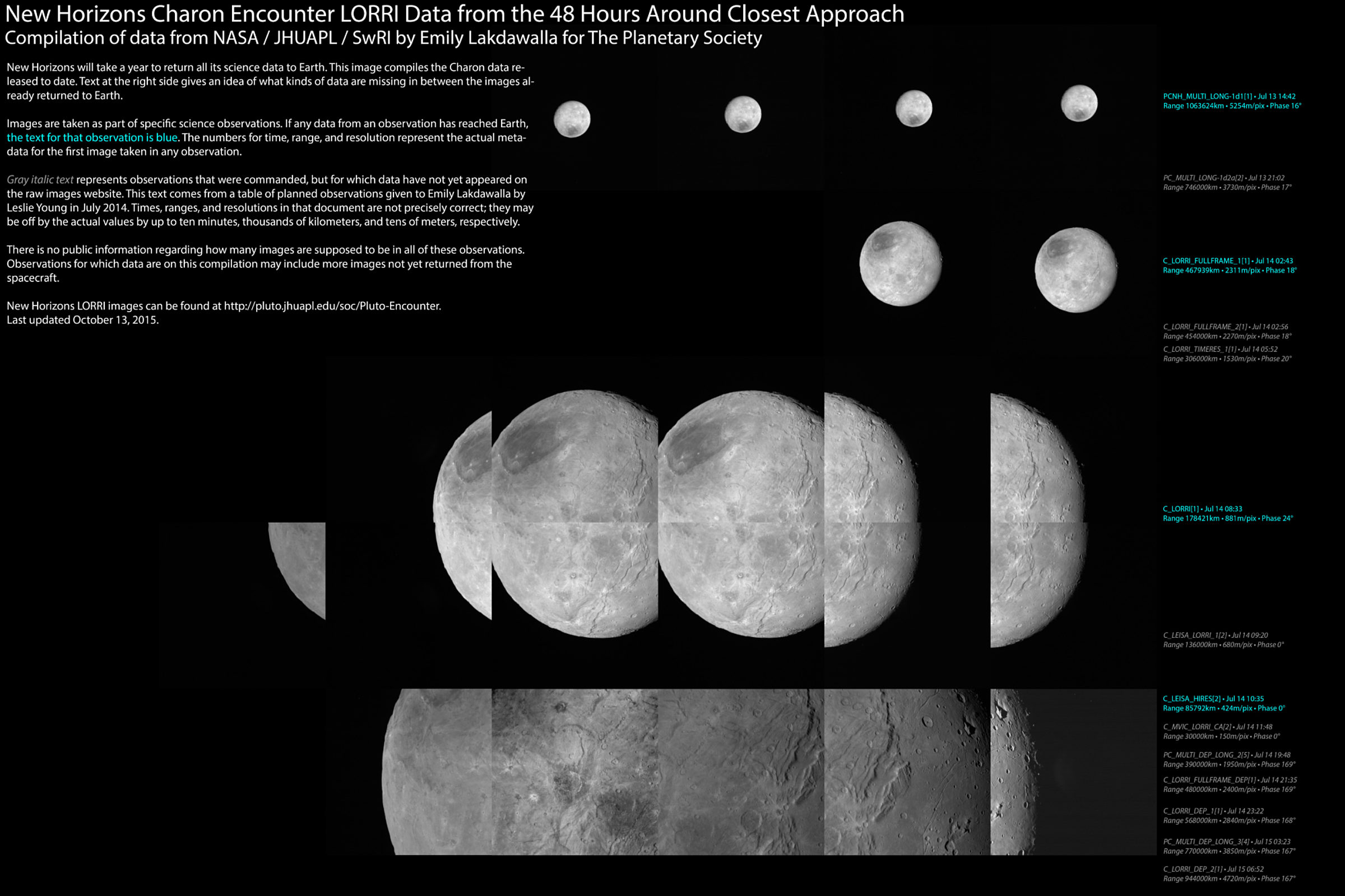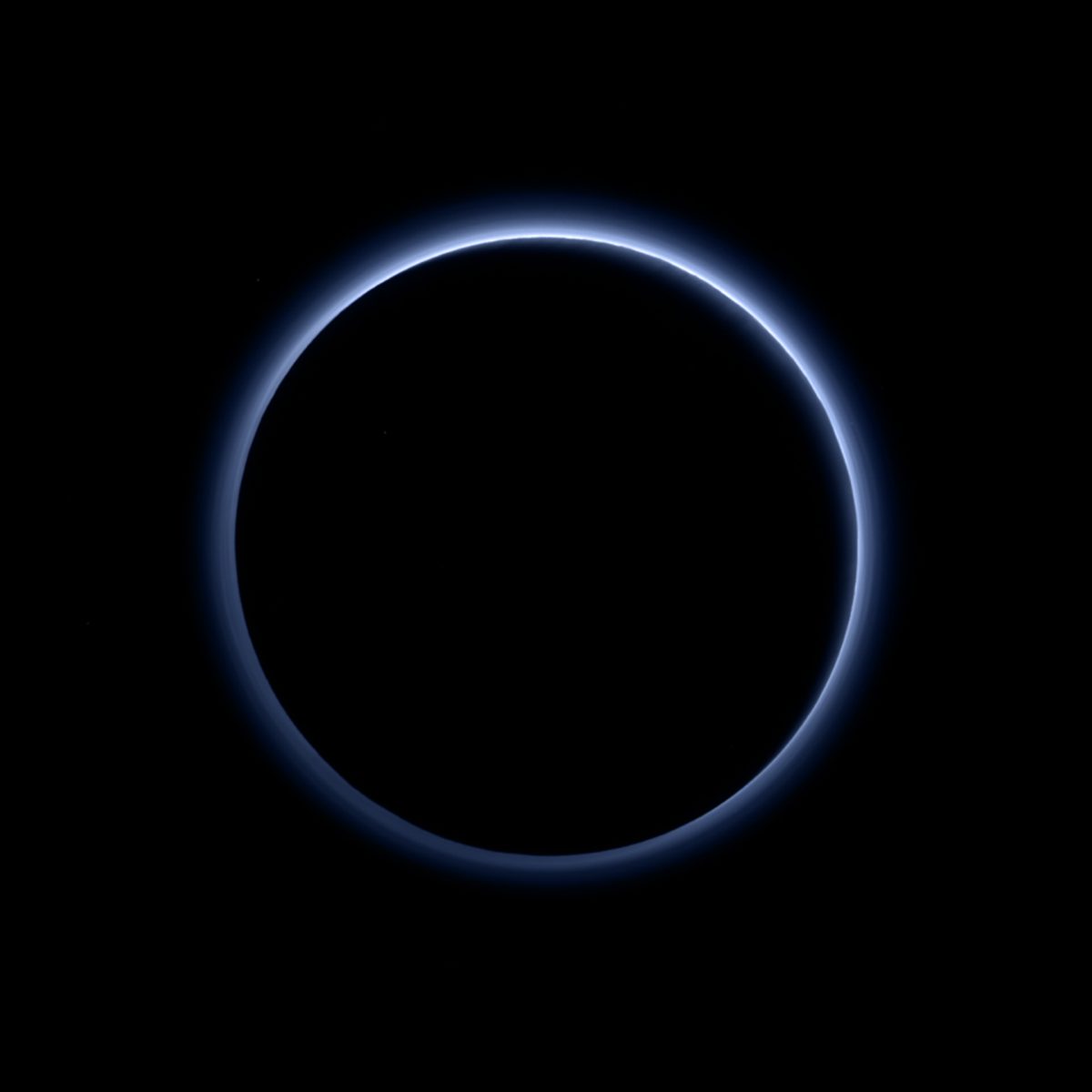Emily Lakdawalla • Oct 13, 2015
Charon in 3D
Last week, the pile of New Horizons LORRI camera raw image releases included nine frames from a high-resolution mosaic on Charon. You can put those together, if you like, to make a nice black-and-white global view, but it isn't dramatically different from the glorious color image of Charon taken by Ralph MVIC that they released last week. However, it is a little bit different. The LORRI view was taken a couple of hours before the MVIC one, and during those two hours, New Horizons' perspective on Charon changed. The perspective shift makes for a pretty dramatic 3D view of this moon's often surprising topography.

Pretty cool! Here's a quick look at all the close-approach Charon imagery now available on the raw image website.

Other recent New Horizons image releases include this lovely color view of Pluto's entire backlit globe, which shows you that Pluto's sunrises and sunsets are tinted blue:

And they finally downlinked a photo of Styx, which is surprisingly small. Pause for a moment and think about how surprising it is that astronomers were able to discover this tiny world, picking out the light of a moon only 5 kilometers in diameter orbiting so close to Pluto. Hubble is an amazing piece of engineering.

Support our core enterprises
Your support powers our mission to explore worlds, find life, and defend Earth. You make all the difference when you make a gift. Give today!
Donate

 Explore Worlds
Explore Worlds Find Life
Find Life Defend Earth
Defend Earth

